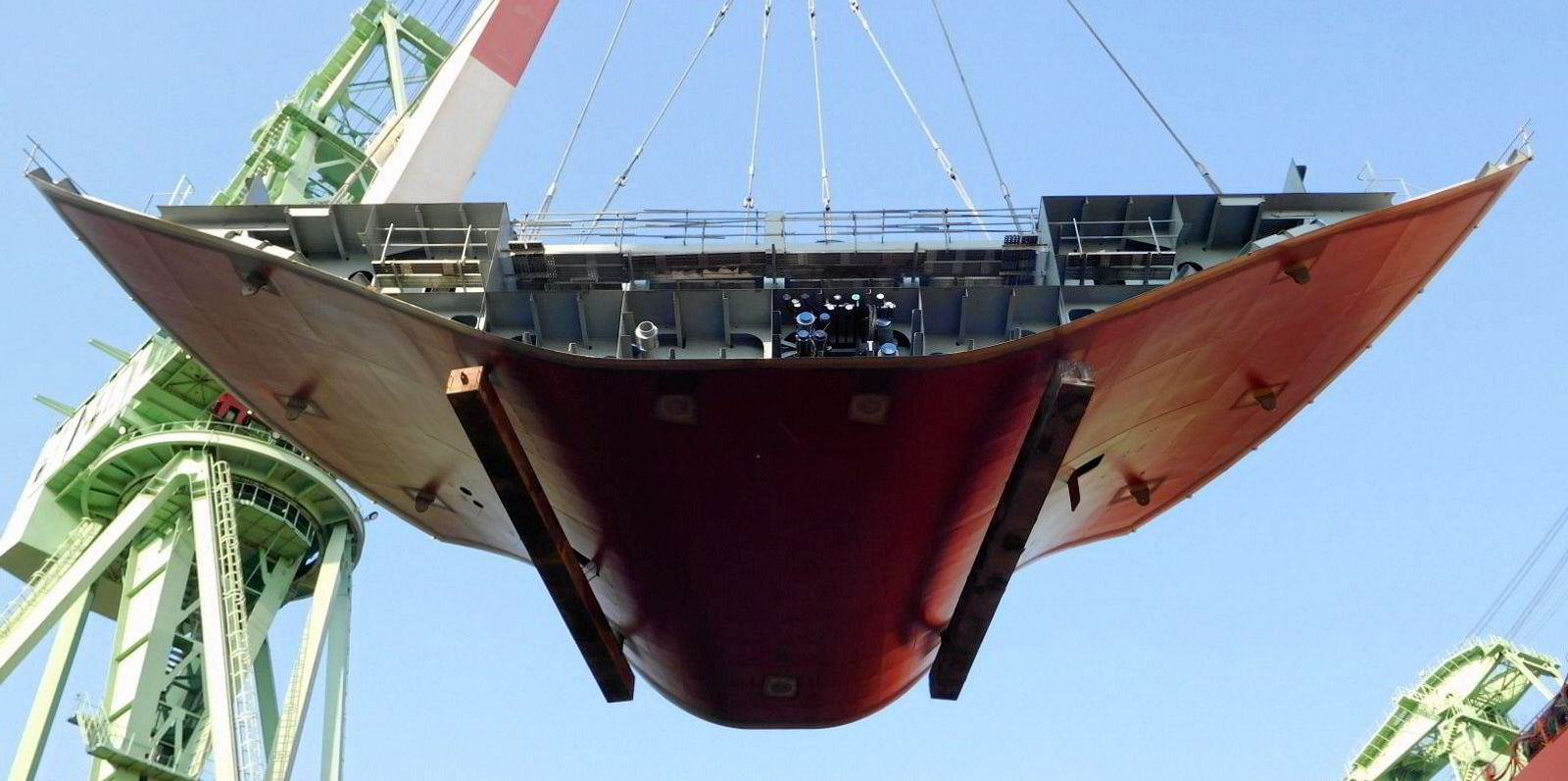Regulators at the International Maritime Organization have turned their attention to a long-standing loophole that allows some ships to get away with higher pollution levels in emissions control areas (ECAs).
The move comes as the IMO also gears up to discuss extensions to ECAs in North America and northern Europe this week.
ECAs are regions where vessels must emit less nitrogen oxides (NOx), sulphur oxides and particulate matter than global limits permit.

But a loophole has allowed shipyards to offer cheaper vessels that emit more NOx because the wording in the regulations puts a newbuilding’s date as when a ship’s keel was laid, and yards have been accused of storing keels laid for customers since 2015.
IMO delegations have told TradeWinds there may have been up to 10,000 pieces of metal laid out as potential keels before the 2015 deadline for the North American ECA, with many still going unused, raising questions about the quality of the steel after so many years.
TradeWinds reported on Asian yards exploiting this loophole in 2016. At the time one classification expert said: “It is no cost or effort for a yard to build a 50-tonne keel and keep it stored, and it is perfectly within the regulation.”
Among the papers this week at the environment committee meeting at the IMO are a batch of submissions from Canada and Norway seeking to expand their territorial waters that are subject to ECAs.
This would mean that ships in these waters would have to use bunker fuel with a sulphur content of 0.1% or use exhaust gas cleaning systems. For NOx emissions, a vessel’s engines would need to meet Tier III standards if it was built after a particular date — currently determined as the date the keel is laid.
Tier III is described in the marine pollution regulations as 80% lower NOx emissions than Tier I. The global limit is currently Tier II, which requires 20% lower emissions than Tier I engines.
The loophole is because the wording in Marpol says vessels with keels laid in or after 2016 for the North American ECA, and in or after 2020 for the North European ECA, need to be Tier III compliant to enter those waters.
So yards have laid keels before those dates and stored them, thus offering owners cheaper ships.
Tier III compliance means ships would need to have more advanced engines and employ after-treatment technologies, such as selective catalytic converters or exhaust gas recirculation.
“When the North American ECA was adopted, there was some concern that shipowners would forego building Tier III-compliant ships, choosing instead to send their older ships to the US and Canada. While that behaviour occurred, it was to a lesser extent than expected,” the delegations of several countries said in a paper at this week’s Marine Environment Protection Committee meeting.
“Instead, shipyards took advantage of compliance being tied to keel laying to lay massive numbers of keels in 2015 to avoid having to install Tier III engines in ships built beginning in 2016. These old, 2015 keels were being used to build new ships as late as 2022 and after.”
The paper said a similar situation is being seen for ECAs in the Baltic and North seas.

The proposal to create a new Norwegian Sea ECA seeks to redefine the keel laying date rules within the area.
Norway is proposing that the wording for its ECA should also include the a ship’s contract date and delivery date in the criteria.
During regulatory discussions this week, there were also comments that the concept of keel laying should be holistically addressed so other regulations that could be subject to this loophole can be amended.
Norway and Canada are seeking to expand their ECAs throughout waters not currently covered by existing areas, beginning in 2030.



